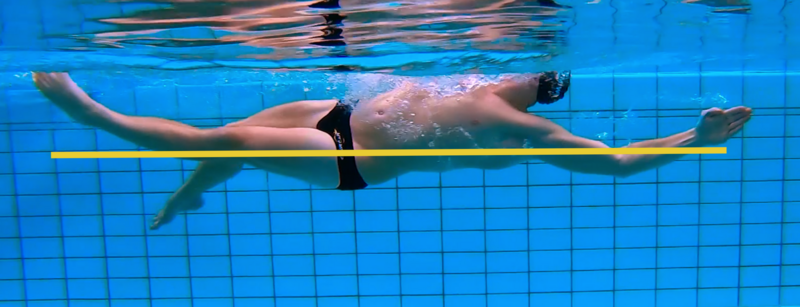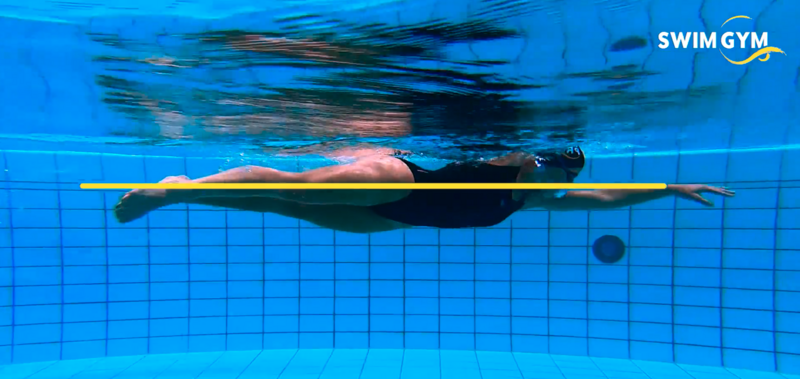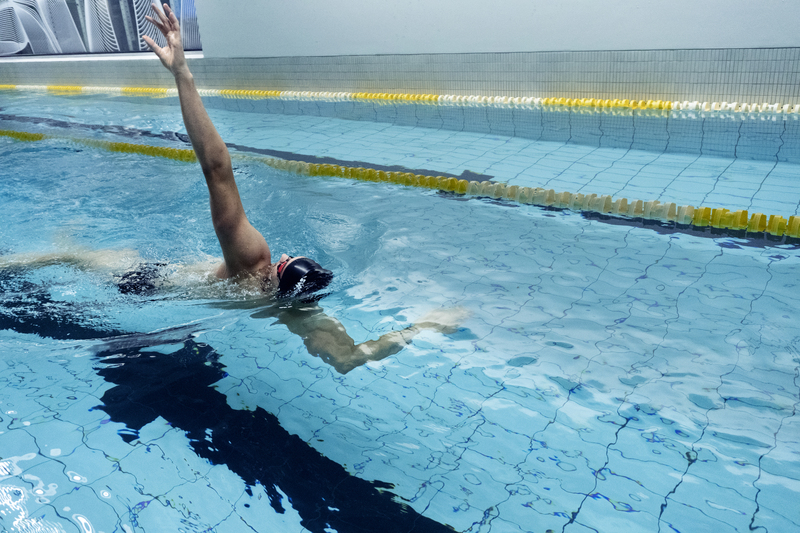Swimming blog - BACKSTROKE How swimming backstroke can improve your freestyle
Should I learn to swim backstroke? Must I include backstroke in my swimming sessions? And does it benefit my freestyle? These are questions we get asked frequently. And the answer to all is YES. Swimming backstroke has a lot of benefits and here is why...
Just like in freestyle, backstroke is all about breathing, posture and rotation. Breathing constantly, maintaining good posture and rotating your body from side to side. These are some key ingredients of both strokes. The benefits of swimming these two strokes regularly is that they are complimentary and the one helps the other.
1. Breathing
Holding your breath is not a good thing in swimming. If you hold your breath it will exhaust you, and swimming will become that much harder. Learning to breathe in backstroke requires good technique, but your face is not in the water so you can breathe freely. Learning to breathe constantly, blowing air out slowly while swimming, is key to a smooth backstroke and freestyle. Backstroke will give you an easier opportunity to learn this skill.
Generally, we see similar mistakes in freestyle, which are either breathing out too much or holding your breath. Coach’s tip is to exhale through your nose on every other stroke and breathe in through your mouth. Same as what we encourage for freestyle.
.jpg)
2. Posture
Body position is very important in both strokes. The better your body position, the less drag you have in the water. Head position, body alignment and overall body awareness are key skills for both strokes.
Just like in freestyle, the head has a big influence on body position in backstroke. Lift the head and the hips will sink. Key is keeping the head still and in a neutral position. A neutral position can be found by floating your head on the water with no tension in your neck. This position will encourage you to lie as flat as possible on the water. A tip for backstroke is looking at the ceiling for a reference mark to swim straight.
For both backstroke and freestyle you want your body to be high and horizontal in the water. The head and feet should be in one line. Chest up and back straight. We can achieve this by activating the core. As in freestyle we use this to counter the sideways motion present in swimming both freestyle and backstroke. The sideways motion comes from using one arm at a time.
Overall body awareness in both strokes is essential. Are you swimming proud: pulling your sternum up and away from your navel, pulling your navel in to flatten your back and keeping your legs straight together with toes slightly pointed? We have no doubt this awareness in backstroke will improve your freestyle.


3. Rotation
In backstroke you are grabbing the water from behind your back. You have to rotate first to achieve this, improving the catch and enabling a solid push out. Just like in freestyle, the quality of the catch is a consequence of your rotation. As mentioned, the catch in backstroke cannot happen unless we first rotate. No rotation, no catch, as the hand will come back out of the water.
The catch is more precise as a result of proper rotation. Precise means more elbow bend, exactly we also want in the freestyle. Practicing this while swimming backstroke will translate to a better freestyle catch.
If the catch is more precise it means our push out is too. The push out is the main form of propulsion in the two strokes. The hand is quickly facing backwards enabling a strong push out. Because the push out is more precise, the hand goes backwards in one line. There is no room for sideway or under body push outs and we are “forced” to finish the stroke.
Rotating first in backstroke means we are engaging the core more often and more consciously. This of course is just as effective as dryland or any other methods to strengthen the core, which also benefits your freestyle.

Conclusion
In addition to all this, backstroke can break up boring training sessions. Making them more fun and challenging. Backstroke also trains different muscle groups, making you stronger and less injury prone. We therefore highly suggest swimming other strokes regularly, read why here.
Furthermore, backstroke opens up tight chests and shoulders and gives our shoulders a rest from the repetitive freestyle action. Sitting at your desk all day can give you a hunched back. Backstroke can help stretch the muscles of the chest and keep you mobile so that you have good posture in freestyle.
Swim backstroke on a regular basis. It doesn’t have to be thousands of metres. Incorporate it into your warm up, or small sets breaking up bigger blocks of freestyle. We have great backstroke workouts and a backstroke course that will help you get started and will get you swimming backstroke like a pro in no time.